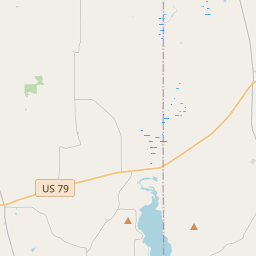Pleasant Grove Methodist Episcopal Church South Cemetery
Historical marker location:






The East Texas farming community of Pleasant Grove, also known as "Shake Rag", was established during the 1850s by southern planters. Among the first settlers were Judge Stephen Decatur Morris (1819-1898) and his wife, Mary (Bradford) (1823-1906), on whose plantation early methodist worship services in the area were held. About 1853, a sanctuary for the Pleasant Grove Methodist Episcopal Church, South, was built. The Methodist Cemetery was established here in 1873, with the burial of James Bradford Morris (b. 1856). He was the son of Stephen and Mary Morris. Others buried here include Dr. Richard H.C. Shelton, an eminent southwestern surgeon; other friends and relatives of Stephen and Mary Morris; and Pioneer Settlers. Church trustees Seaton Moore, Simpson Moore, and G.D. Boatwright purchased this land for the church and cemetery in 1877. The pleasant grove church eventually disbanded, with the remaining members joining St. Paul's Methodist Church in Henderson (11 mi. NE). By 1929, the year of the last burial in this graveyard, most methodist families were using the City Cemetery in Henderson. The Pleasant Grove Cemetery remains an important part of the record of early settlement in this part of Rusk County.
Texas Sesquicentennial 1836-1986
As one of the most visible programs of the Texas Historical Commission (THC), historical markers commemorate diverse topics in Texas history, including: the history and architecture of houses, commercial and public buildings, religious congregations, and military sites; events that changed the course of local and state history; and individuals who have made lasting contributions to the state, community organizations, and businesses.
The city of Austin, the state capital, is known as the live music capital of the world. It is home to many music festivals, including South by Southwest (SXSW) and the Austin City Limits Music Festival.
In the early 19th century, American pioneers began to settle in what is now Rusk County. The county was named after Thomas Jefferson Rusk, a prominent Texas statesman and military leader. Rusk County played a significant role in the Texas Revolution, with several local residents participating in the Battle of San Jacinto, which ultimately led to Texas gaining independence from Mexico in 1836.
The discovery of oil in Rusk County in the early 20th century brought a wave of economic development and prosperity to the area. The East Texas Oil Boom transformed Rusk County into one of the largest oil-producing regions in the United States, attracting thousands of workers and businesses to the county. The oil industry continues to be a major economic driver in Rusk County today.
In addition to its oil heritage, Rusk County is also known for its rich cultural heritage. The city of Henderson, the county seat, boasts a historic downtown district with many well-preserved buildings from the 19th and early 20th centuries. The county is also home to numerous historical sites, museums, and events that celebrate its history, including the Rusk County Historical Commission and the Depot Museum in Henderson.
Rusk County Timeline
This timeline provides a glimpse into the major events and milestones that have shaped the history of Rusk County, Texas.
- 1843 - Rusk County established as a county in the Republic of Texas
- 1858 - The town of Henderson becomes the county seat
- 1861-1865 - Rusk County residents participate in the American Civil War
- 1901 - The first oil well is drilled in Rusk County, leading to the East Texas Oil Boom
- 1937 - Rusk County experiences a devastating flood, causing significant damage
- 1964 - Martin Luther King Jr. delivers a speech in Henderson during the Civil Rights Movement
- 1989 - The Texas Legislature designates Rusk County as the "Antique Capital of East Texas"
- 2020 - Rusk County celebrates its 177th anniversary